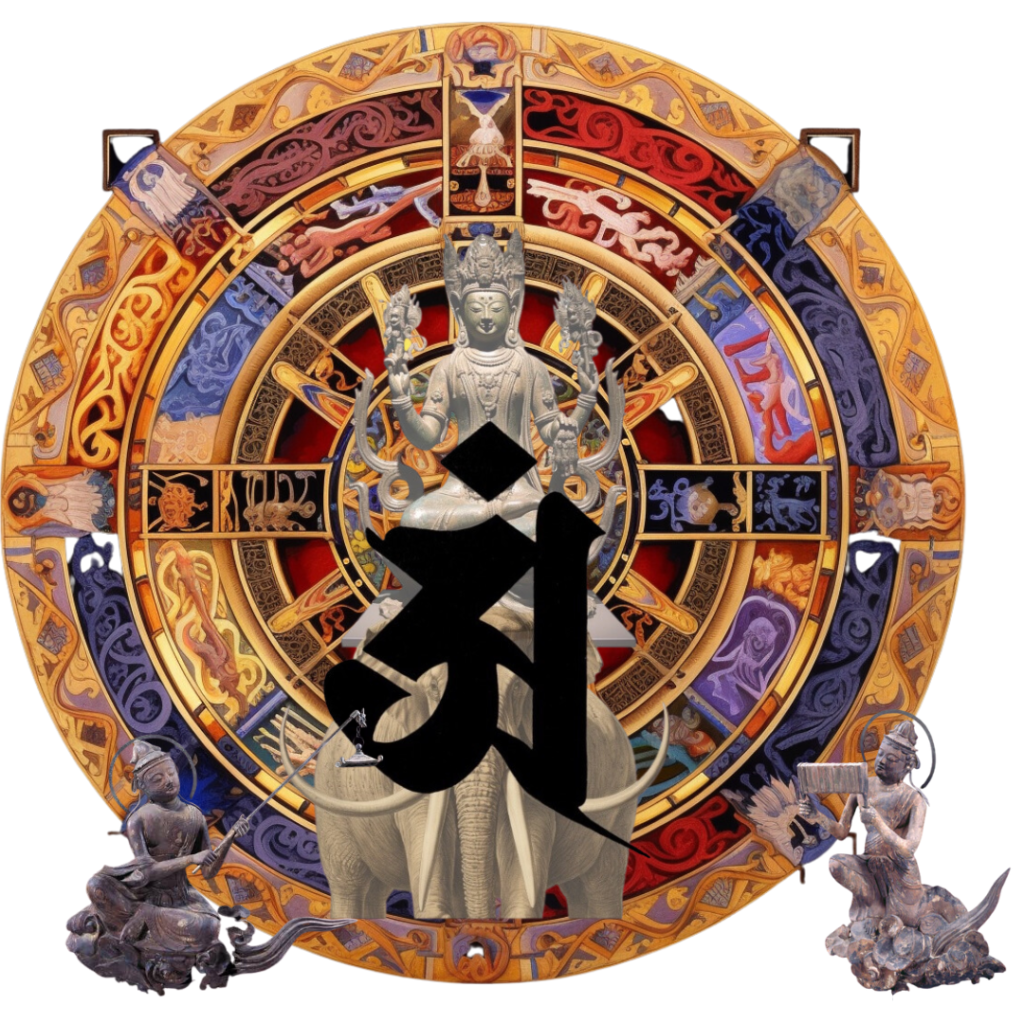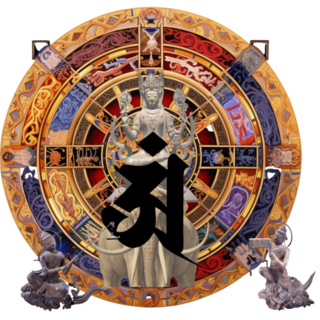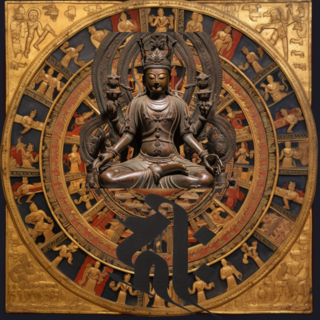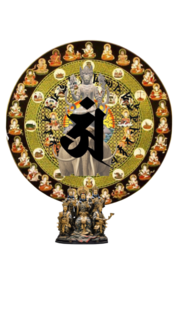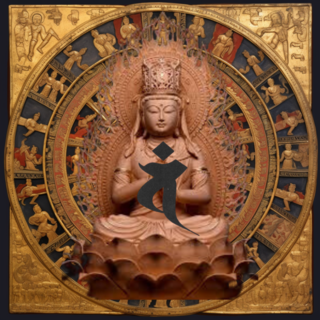. "脳と記憶の仕組み:わかりやすく解説"
1. 意識されない情報と刺激経験知覚情報は記憶の基本要素である。
2. 意識されない情報も記憶に取り込まれる例として、スキーや水泳の練習が挙げられる。
3. 脳は外部情報と内部情報を組み合わせて事態を判断し、感覚器官の訓練が重要である。
4. 記憶は主に大脳の側頭葉と海馬を中心とした領域にたくわえられる。
5. 側頭葉と海馬は記憶の貯蔵所であると同時に、解釈や判断にも関与している。
6. 記憶は大脳全体に分布し、側頭葉と海馬はその中心的な機能を果たす場所である。
7. 第一信号系(第一情報)と第二信号系(第二情報)に基づく条件反射の理論が存在し、記憶の場所が異なる。
8. 第一信号系は意識されない情報が大脳辺縁系に、第二信号系は意識された情報が新皮質の側頭葉にたくわえられる。
9. 脳の出力は過去の経験に基づいて判断や行動を行い、条件反射の理論により記憶の材料が利用される。
10. 密教は第三の信号系を持ち、求聞持法を通じて頭のよさを訓練できるとされている。
Subconscious information and stimulus experience Perceptual information is the basic element of memory.
2. Skiing and swimming practice are examples of unconscious information being incorporated into memory.
3. The brain combines external and internal information to judge situations, so training the sense organs is important.
4. Memories are stored primarily in the temporal lobe and hippocampus of the brain.
5. The temporal lobe and hippocampus are memory stores and also involved in interpretation and judgment.
6. Memory is distributed throughout the cerebrum, and the temporal lobe and hippocampus are the places that perform its central functions.
7. There is a theory of conditioned reflexes based on the first signal system (first information) and the second signal system (second information), and the locations of memory are different.
8. The first signal system stores unconscious information in the limbic system, and the second signal system stores conscious information in the temporal lobe of the neocortex.
9. Brain output makes judgments and actions based on past experiences, and memory materials are used according to the theory of conditioned reflexes.
10. Esoteric Buddhism has a third signal system, and it is said that one can train one's intelligence through the practice of gyomonjiho.
システムとしての求聞持法
「変身の原理」で、私は、カナダの著名な神経外科学の大家、W・ペンフィールドの発見 密教の持つすぐれた知能開発法寺聴法」のメカニズムの一端を解説した。 私はそのとき、「ひとたび修身するや、目はカメラになり、耳はテープレコーダーに変化し て、ひとたび目にし、ひとたび耳にしたことは永久に忘れなくなる技術である」と説明した。 たしかにその通りであるが、そのためにこの法を、一種の記憶力増強法、いわゆる記憶術の一 のようにうけとったひともあるようである。ページ数の関係その他の事情から十分に説明でき ず、それも無理のないことであったが、この技法が単なる記憶術のようなものであるのなら、た いした価値のないつまらないものといわればならない。なぜならば、ただ単に記憶がよくものお ぼえがよいというだけでは、ひとはよい仕事をすることができない。 ただたんにもの知りだけで はすぐれた業績をのこすことはできない。問題は、多量に持っている知識(情報)を、いかに活 用してあたらしいものを生み出すかというところにある。
い子とのよい子のちがい
ギャラップは、そるべき技術である。 知能とはなにか。 ごく大ざっぱに分けるならば、二つの
であろう。記憶と創造である。 特聡明法は、この二つのはたらきをするメカニズムに、あた らしいメカニズムをつけくわえて、あたらしい力と効果を発揮する。
この技法が、ジョージ・ギャラップや、オルダス・ハックスリーのいうように教育にとり入れ られたならば、人類のうける利益は想像することもできないほどのものである。 ギャラップのい うように、ヒトは、まさに、未来に向かって数百年の飛躍をすることができるであろう。 そういうと、そんなすばらしい技術がどうして今まで世のなかにあらわれなかったのかと、あな たは疑問に思うかも知れない。
これほどの技術が、なぜ密教寺院の片すみに埋没してしまったのか、いくつかの理由があげら れるだろうが、その最大の理由はこうである。
すぐれた古い方法がまったく見落とされてきたということは奇妙なことだ。 それに、あと になって全く忘れ去られてしまっている非常に重要な技術を発達させた個人、あるいは文化がよ くあるのだ。しかし、それらはやはり大きな価値を持ちつづけているのだ』(
といっているが、この大きな価値を持ちつづけているすぐれた方法が忘れられてしまったわけ は、それにつづくギャラップのおなじ文章のなかに見出すことができる。
システムとしての間あって、思い出される記憶と、思い出せない記憶の二つがあることを、私は、「変身の原理」 で説明した。脳の記憶のメカニズムはたいへん複雑で、それはまだ脳生理学でも十分に解明され ていないのだが、一応、その仕組みを見てみよう。
経験というのはひとつの刺激である。その刺激が記憶になるまでには、だいたいつぎのような 段階を経る刺激を感じるのは、俗にいう「五感」である。 五感とは、視覚、聴覚、味覚、嗅覚、触覚をい うが、こまかくかぞえればまだ多くの「感覚」があり、おなかが空いたとか、なんとなくけだ るく気分がよくない、とか、そういう身体の内部におこっていることを知ることもできる。つま り、われわれの身体の内部、外部におきていることがわれわれ自身にひとつの影響をおよぼす。 これが、「刺激」である。
こういう刺激があると、身体にある「感覚器」または「受容器」というものがこれに反応し電気的パルスを送り出す。 たとえば、 赤い花があれば、そこから反射された光が目のレンズ を通して受容器としての視神経を刺激し、視神経がパルスを送り出す。 これはパルスであって、 刺激の強さが大きければその数がふえるだけで、電圧が大きくなるわけではない。おなじよう に、皮膚になにかが触れれば、皮膚にある受容器が圧力を感じ、その圧力に応ずる数のパルスを 神経に送りこむ 次頁の上図は、このような受容器のいくつかの例である。
Gumonjiho as a system
In ``Principles of Transformation,'' I explained part of the mechanism behind W. Penfield, a famous Canadian neurosurgical expert, who discovered esoteric Buddhism's excellent intelligence development method. At that time, I explained, ``Once you cultivate yourself, your eyes become cameras and your ears become tape recorders, and once you see and hear something, it is a technique that you will never forget.'' This is certainly true, but for this reason some people seem to have taken this method as a kind of memory enhancement method, a so-called memorization technique. Due to the number of pages and other circumstances, it was not possible to fully explain it, which is understandable, but if this technique was just a memorization technique, it would be said to be of little value and boring. Must be. This is because a person cannot do a good job simply by having a good memory and remembering things well. Mere knowledge alone will not enable him to produce outstanding results. The problem is how to utilize the large amount of knowledge (information) we have to create something new.
The difference between a good child and a good child
Gallup is a technology to be reckoned with. What is intelligence? If we can roughly divide it into two
Will. It is memory and creation. The Tokuseiho method adds a mechanism that is unique to her to the mechanisms that perform these two functions, and exerts new power and effects.
If this technique were incorporated into education as George Gallup and Aldous Huxley suggested, the benefits to mankind would be inconceivable. As Gallup's guy says, humans could indeed take a leap of several hundred years into the future. You may wonder why such wonderful technology has not appeared in the world until now.
There are several reasons why such technology was buried in the corners of esoteric Buddhist temples, but the biggest one is as follows.
It is strange that a good old method has been completely overlooked. Moreover, there are many individuals and cultures who developed very important techniques that have since been completely forgotten. However, they still continue to have great value.''
However, the reason why this excellent method that continues to have great value has been forgotten can be seen in the same article from Gallup that follows.
I explained in ``Principle of Transformation'' that there are two types of memories that exist as a system: memories that can be recalled and memories that cannot be recalled. The memory mechanism of the brain is extremely complex and has not yet been fully elucidated in brain physiology, but let's take a look at how it works.
Experience is a stimulus. It is what is commonly called the ``five senses'' that sense a stimulus, which goes through roughly the following stages before it becomes a memory. The five senses refer to sight, hearing, taste, smell, and touch, but if you take a closer look, there are many more sensations, such as feeling hungry or feeling sluggish or not feeling well. You can also find out what's going on inside your body. In other words, what happens inside and outside of our bodies has an impact on us. This is "stimulus."
When such a stimulus is received, the body's ``sensory organs'' or ``receptors'' respond by sending out electrical pulses. For example, if there is a red flower, the light reflected from it passes through the eye's lens and stimulates the optic nerve, which acts as a receptor, and the optic nerve sends out pulses. These are pulses, and the greater the stimulus intensity, the more the number of pulses increases, but the voltage does not increase. Similarly, when something touches the skin, receptors in the skin sense the pressure and send a corresponding number of pulses to the nerves. The diagram above on the next page shows some examples of such receptors. It is.
さて、このようにして受容器にあたえられた
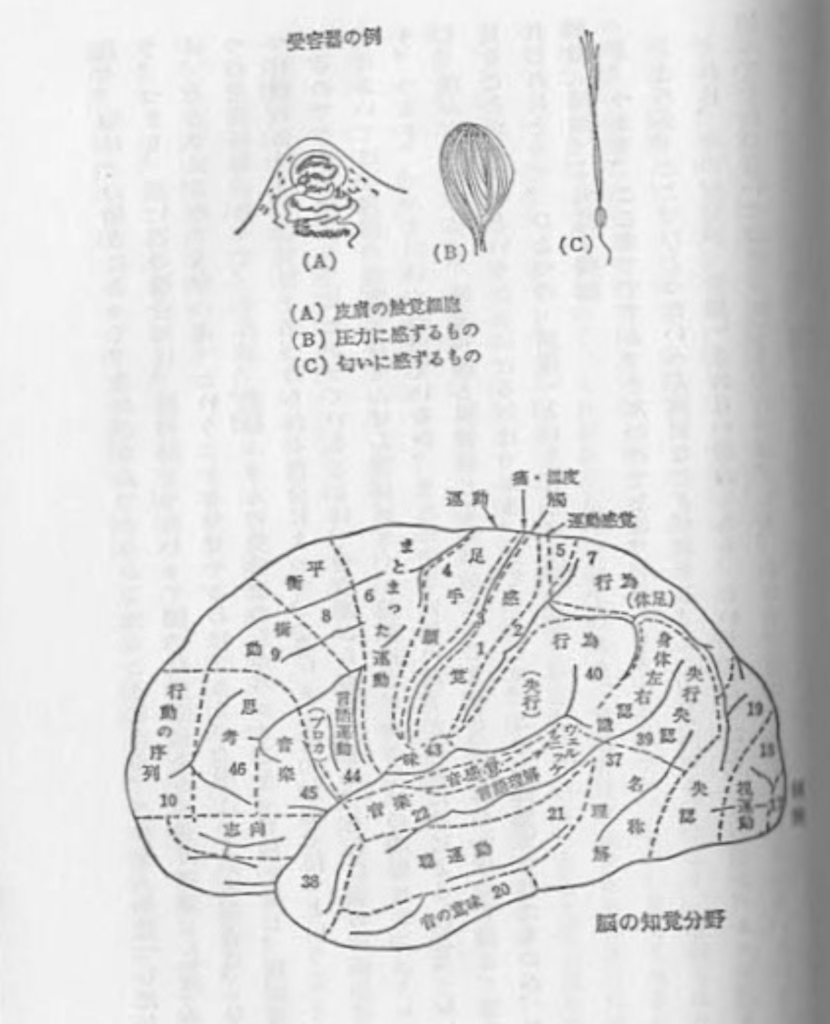
れる。脳はその働きによって、それがなんであるかを知ることになる。これを「知覚」したとい う。つまり、赤い花の場合には、視神経をつたわって脳の後頭葉にある視覚野に達したパルス は、そこではじめて「赤い花」ということを知覚するわけである。 「聞く」という場合は、ひと つの空気振動があって、それが、鼓膜ふきんの受容器からのパルスとなって脳に達し、側頭葉の つけ根のあたりの聴覚と名づけられる部分によって、「音」としての知覚を持つということに なるのである。現在までにわかっていることは、受容器からのパルスは、それ以後の神経伝達機 構においては受容器の種類にはぜんぜん関係がなく、純粋に、パルスだけの問題になってしま う。つまり、パルスがいくつ出ているか、または出ていないか、というだけによるので、もし も、なんらかの方法で、聴覚神経と視神経とを結びかえてしまうと、われわれは光を聞き、音を 見ることができるということになるわけである。 さて、 そこで、この「知覚」されたものが、わ れわれにとって、ひとつの「情報」ということになる。
刺激(経験)→知覚→情報
と、つまり、ここまですすんできたわけである。
こういうことになる。
ところが、ここでひとつたいへん重要なことがおきる。
それは、その知覚が「意識」されない場合もある、ということである。 受容器がパルスを送り 出してそれが届いて知覚されてもそれが必ずしも、かならず意識されるとはかぎらないという とである。「見れども見えず、聞けど いったがあん、しない。 つまり、知覚しても意識していないということである。
では、そういう意識されない信号は、情報にはならないのか?
刺激 経験ということばは、意識がともなう必要があるように思われる。つまり、意識されな 刺激は経験にならないのではないかということである。 どうであろうか。しかし考えてみると われわれは日常の行動において、 それがありふれた動作の場合、意識をはたらかせることは非常 にすくない。手なれた動作や作業の場合、ほとんど無意識でおこなっている。たとえば「道を歩 「く」というようなごくありふれた動作をする場合に、われわれはほとんど意識せずに歩くという 動作をおこなっている。いちいち足のウラの感覚器官からの情報を意識していたら、たまったも のではない。しかし、足がなにかにつまずくというような、異常な状態が起きると、間髪をいれ ず意識がはたらきだす。 ということは、それまでわれわれは異常なしという情報をうけとりつづ けていたのであるが、意識はそれに注意をはらわずにおり、異常が起きた瞬間、ただちにそちら へ意識を向け直したということであろう。
そこで考えられることは、われわれがうけとる情報は、常に一時にひとつということでなく、 いつも多数の情報が同時にかさなって入ってくるので、われわれの意識はそのなかでももっとも 大きな、ということはもっとも注意をひく情報に向けられているということであろう。 電子計算 機の父といわれる故ノイマン博士の計算によれば、人間が一秒間に受けとる情報の量は一四〇〇ビットぐらいだといわれる。一ピッドというのは、イエスかノーかという情報単位であるが、 これは、われわれが知っているもっとも大きな電子計算機の記憶一〇〇万ビッドの十四万倍と いう大量のものである。これだけ大量の情報をいちいち意識することはとうてい不可能であり、 そこでわれわれの意識は、そのなかから注意を要する情報にだけ意識を向けているというわけで ある。だから、意識されなくても情報はつねに入っており、意識されない情報もあるということ になる。
そこでいままでのところをとりまとめると、こういうことになる。
Stimulus (experience) → perception → information
In other words, we have made it this far.
This is what happens.
However, one very important thing happens here.
This means that the perception may not be ``conscious''. He says that even if a receptor sends out a pulse and it reaches us and is perceived, it does not necessarily mean that we are conscious of it. ``I see, but I don't see; I hear, but I don't do it.''In other words, even though I perceive it, I am not conscious of it.
So, aren't such unconscious signals considered information?
It seems that the word stimulus experience must be accompanied by consciousness. In other words, a stimulus that is not conscious may not become an experience. What do you think? However, if you think about it, he says that in our daily actions, we rarely use our consciousness when the actions are commonplace. Most familiar movements and tasks are done unconsciously. For example, when we perform a very common action such as ``walking'' down a street, we do it almost unconsciously. If he was conscious of the information from the sensory organs on the back of his feet, he wouldn't be able to tell. However, when an abnormal situation occurs, such as tripping over something, consciousness immediately begins to function. This means that until then we had been receiving information that there was no abnormality, but our consciousness did not pay attention to it, and the moment an abnormality occurred, we immediately redirected our attention to it. Dew.
What we can think of is that the information we receive is not always one piece of information at a time, but a large number of pieces of information are always coming in at the same time, and the most important thing to remember is that our consciousness is the largest of all of these pieces of information. It is likely that the information is aimed at obtaining information. According to calculations by the late Dr. Neumann, who is said to be the father of electronic computers, the amount of information that humans receive in one second is said to be about 1,400 bits. One bit is a unit of information that indicates yes or no, but this is a large amount, which he says is 140,000 times the memory of the largest electronic computer we know of, which is 1 million bits. . It is simply impossible to be conscious of such a large amount of information, so our consciousness focuses only on the information that requires our attention. Therefore, information is always present even if we are not conscious of it, and there is also information that we are not conscious of.
So, to summarize what has happened so far, it is as follows.

1意識されない情報
2刺激経験知覚情報 2意識された情報
さて、つぎに、これらの情報が「記憶」になるわけだが、われわれは、たとえ知覚したり、感 じたりすることができても、これが記憶に残らなかったら、 「情報」として活用することはでき ない。つまり、ほんとうの情報にはなり得ないということである。 そこで問題になるのは、意識 された情報は論外として、意識されない情報はどうなのか、それも記憶になるものかということ である。しかし、これも考えてみると、スキーや水泳のように、いちいち意識しない動作でも、 練習による繰り返しを肉体がおぼえていて、これの積み重なりが熟練になるわけだから、つまり は、意識されない情報も、記憶のなかにくりこまれるということになる。そこでもっとも簡単な いい方をすれば、見たり、聞いたり、さらにそのほかのあらゆるかわ
によって感知され、これらを
新しい事態が発生すると、われわれの感覚器官は、その事によってひきされた
送り、脳はこれらの信号を感知することによって情報を得る。 これは、いうなれば「外部情報」 というべきだろう。
つぎに、脳は、以前から持っていた記憶を「内部情報」としてひきだし、外部情報と照らしあ わせることによって、はじめてこの事態を判断することになる。だから、もし、われわれが 生まれてからこのかた、ずっと感覚器官のはたらきが不完全であったら、われわれの脳のなかに ある記憶は非常に貧弱なものとなり、したがってわれわれの判断は正確を欠くことになる。だか ら、感覚器官の錬磨洗練ということは非常に大切なことであり、このことはあとになって関連す ることが出てくるから、よく記憶しておいてほしい。
さて、そこで、今までのところを総括すると、こういうことになる。
刺激(経験) 知覚情報
意識されない情報」 意識された情報
記憶
前世の記憶
では、記憶は脳のどこにたくわえられるのであろうか?
それは、大脳の側頭葉と、海馬を中心とした領域でなされるようである。
そこで、
実際に、海馬や側頭葉がこわされると、いろいろな型の記憶障害がおこることが、動物や人間 についてたしかめられている。また、側頭葉の電気刺激で過去の体験を再現することに成功した ペンフィールド博士の実験(旧)や、ネズミの海馬をこわすと判別能力がわるくなるという 条件行動の実験も、側頭葉や海馬が記憶やそれにもとづく判断のはたらきに直接関係しているこ とを示している。ただし、それは、側頭葉と海馬だけが記憶の貯蔵所という意味ではなく、記憶 はある程度、脳全体に分布しており、側頭葉と海馬は、その中心としてはたらく機能を持ってい る場所であるというように考えられている。
側頭葉は記憶の機能に密接な関連をもつ。記憶に、海馬を中心とした辺縁系が重要であること は前にものべたが、それを含む側頭葉切除では、古くたくわえられた記憶は失われないが、新し い情報を記憶に組みこみ、早期にそれを固定し、必要に応じてそれを引き出して用いるはたらき <記銘と回想)に重要な障害をきたすことが、脳外科的手術の経験の増すとともに確かめられた。 前頭葉の破壊によって古い記憶障害されにくいところをみると、記憶は広く全脳にたくわえら れるものであって、側頭葉はその出し入れと照合(解釈)に主役を演ずるものらしい』(脳のはた らき・島崎敏樹 宮坂松術著) そしてそれは海馬もおなじようなはたらきをするものと考えられる。 『記憶は多分、視床の連合や、大脳皮質では第二次運動野、第二次知覚野および連合野でたく わえられる。 触覚性の行動の 身体の部分に対応した 、
また、側頭葉表面の刺激で、短期記憶がさまたげられることや、見れているものが自覚的 初めて見るごとく感じ(未体験)、または反対に、これまでに見たことのないものが、以前に 見たごとく感じる(既視体験など、側頭葉と記憶との密接な関係はよく知られているところで あるが、刺激によって長期記憶を再生するのも側頭葉であるが、それは多分、側頭葉深部の 海馬が刺激されて、記憶貯蔵所を興奮させ、記憶されたときと同様な型の興奮を生じ、記憶が再 生されるのである。海馬を中心とする大脳辺縁系のニューロンは、知覚系、 運動系、覚醒系、動 制御系その他の機能系を連合して記憶と結合する道であり、記憶をたくわえ、または再 生する有力な道である』(脳のはたらき・吉井直三郎著)
記憶の所在は、粗大な分類にしたがえば、大脳皮質と間脳との間の広汎な領域にある。 その領 城の神経連鎖にニューロンの活動の型が記憶として残されるのであろうが、これを細胞レベルで 考えると、運動系、知覚系、覚醒系、睡眠系、動因系、制御系のいずれにあっても、その主回路 他にあると考えられる多数の副回路のなかに反射化された学習回路が残されるのであろう。 そ 故、大脳にひろく記憶が保持されているといえるであろう』(脳のはたらき 吉井直三郎著) 以上の専門学者の説明を参照した上で、私の求聞持法の体験をあわせ判断すると、記憶の場 半球内側面で間をかこむ部分、つまり「帯状回」のあたりであると私は思う。
私は、海馬それ自体の奥ふかくに、ごく古い記憶(深層記憶がたくわえられているものと信ず る。 それは、動物実験で、人間におこなわれた側頭葉表面の刺激(ペンフィールド博士の実験)と おなじ効果が得られることから、 それは、間違いないものと思われるのである。
すなわち、電極針を動物の頭のなかに入れて、海馬を刺激したとき、注意を集中する注意 集中反応 なにかを探索する探求反応が顕著にあらわれる。
これは何物かの記憶がよび起こされ、 "幻覚が起こったのだともいわれる」(脳のはたらき・島 敏樹宮松術著)のである。それはちょうど、 ペンフィールド博士の実験で側頭葉の表面に電 針をあてられた被験者が、なん年ものまえの出来事をそのまま想起してびっくりしている状態 そのものである。 そこで、この実験を動物ではなく、 なんらかの方法で生きている人間の海馬の 中心を刺激すれば、彼の前世、前々世の記憶がよみがえるのではないか?(教は特殊な方法で それをやるのである)
第一信号系と第二信号系
さてそこで、話は前にもどるのであるが、記憶のもとになる 「情報」に、二種類あることをさ きに述べた。
すなわち、意識された情報と、意識されない情報である。 これから、意識されない情報を第一情報"意識された情報を第二情報" とよぶことにする。 第一情報も第二情報も、ともに記憶 の で、この二つが記憶になるわけである。
ただし、第一情報と第二情報とでは、その記憶の場所がちがうのである。
第一情報は古い皮質の海馬の表面あたりに記憶される。これはどうしてかというと、海馬には 大脳辺縁系の中心で、本能行動、情動行動を支配する。 本龍行動というのはほとんど意識されな 行動である自律的なはたらきの領分であって、痛みや痒みなどの感覚にたいして、パッと無 意識のうちになされる動作のたぐいである。だから、情報も、無意識の情報はここに集まって、 それに対する反応も無意識のうちに対応されるように準備されるのだと考えればよい。
これに対して、第二情報は新しい皮質の側頭葉にたくわえられる。
脳の「解釈上の錯覚」について実験をくりかえしたウィリアム博士の実験により、側頭葉の全 領域が、ものの解釈をする部分であることがわかった。 この領域を刺激することにより現実のも の事の解釈のまちがいが生じ、この領域以外ではそういうことが見られぬことがあきらかになっ た。脳は、その一連の情報をまとめながら、過去の経験の記憶をひき出して適切な照合を行な 現在の経験を解釈して、状況に応じた適切な行動をおこさねばならない。この、記憶をひき 出し、現実を解釈する機能に側頭葉がもっとも重要な役わりをはたすわけで、ペンフィールド博 「解釈する質」とよんでいる。
一種の解釈であるのだ。 そこで第二情報は解釈する皮質である頭にされ、そこでに、多くくりかえされた記憶は旧古皮質の奥の海馬のほうに移っていってそこにたくわえられる ようである。ペンフィールド博士の実験でも、電気刺激をあたえた側頭葉表面の皮質を削除して も、そういう記憶はなくならなかったという報告があるから、上部(表面)の新皮質のほうに入 った記憶も次第に辺縁系のほうにしまいこまれてゆくのであろう。 それは、たとえば、タイプラ イターの練習などでもよくわかる。タイプの練習に際して、「上手になろうと思ったら、 キーボ ートは見ないほうがよい」といわれる。 最初、それにしたがって、「Aの字は? あれは下から 二段目の、一番左の端だったな。 小指で打つこと」などとアタマで考えながら打とうとす る。アタマというのは「新しい皮質」であるから意志的である。そして運動の皮質がはたらいて 小指を動かす。目は印字をよみ、その形を見て「たしかにAの字だ」 と判断する。 こういうこと
ん回もくりかえして練習していると、そのうちに、いちいちこんなことを考えなくても打 てるようになる。このことは、つまり、「新しい皮質」にたん回もん回もくり返して入れ たことは、だんだん「古い皮質」に入りこんでゆく。 そして 「本能的」にできるようになる、と いうことだ。自動車の運転などもそのよい例のひとつである。
この第一情報、第二情報を、脳の重要なはたらきである「条件反射」の理論に基づき、脳の第 一信号系、第二信号系として発表したのが、ロシアの有名な生理学者I・P・パブロフである。 つまり、第一信号系とは、第一情報のことで、意識されない情報を主にした、感覚器官からの そのままの情報である。だから、これは動物でも人間でもおなじである。
それがそのままのかたちで記憶されてゆく感覚そのままの旅の情報で、
れるものもあるが、多くは意識されないまま送りこまれる。 それに対する反応もまた無意識のま 反射的に送り出されることが多い。まぶしいという感覚にただちにクシャミが反応するという などその典型的なものである。 そしてそのとき、まぶしくてクシャミをしたという経験(情報) は、そのまま記憶になる。
これに対し、第二信号系は、人間にしかない。なぜかというと、この信号系はコトバによって 成り立つものだからである。 第二信号系は、感覚器官からの情報をいったん意識を通してコトバ でひとつのかたちにまとめた情報である。ナマの情報ではない。そういうかたちにして記憶領域 におくりこんだり、論理的判断、思考をする機能である。
人間の知的進歩は、コトバの発見によるこの第二信号系の発達によるもので、 これあるがため に、人間は、外部のあらゆる雑然たる情報を、自分の内部で、論理的、系列的、抽象的におきか えたり、積み重ねたり、他にそれをつたえたりすることができるようになったわけである。
しかし、もちろん、こういったからといって、この二つのものは、おのおのべつべつに動いて いるのではなく、この両者がそれぞれ独立しているというのは、相対的な意味においてであっ で、第二信号系はコトバ、第一信号系は感覚として、両者は結局第二信号系にみちびかれる完全 にひとつのものとして一緒に活動しているのである。そこで今までのところを総括すると、こう
いうことになる。
刺激(経験)―知覚情報 1意識されない情報第一信号系旧古皮質の大脳辺縁系 意識された情報第二信号系新皮質の側頭葉
海馬(記憶)
密教は第三の信号系を持つ
さて、今までは、もっぱら、「大」の面を考えてきたわけであるが、今度は入ったものをも とにしておこなわれる「出る」のほうを考えてみなければならない。
われわれがひとつの出来事に直面して、 それに対し、判断したり、計画を立てたり、行動をお こしたりするのがアウトプットであるが、それはどのようにしておこなわれるか?
今までにうけ入れてあるすべての情報、できるだけして、それをもとに、判 断 決定 行動の材料にするわけである。だから、このいちばん重要なことは、その材料が豊 富であることである。判断はそれが貧弱なほどあやまりをおかしやすいし、豊富なほど正しい判 断をする率が高い。ちょうど、むずかしい局面に直面した棋士が、過去に記憶(経験したすべ
定石や変化を思い浮かべて、それをもとに、もっとも有利で正確な手を打とうとするのと同 じことで、そういう場合、力の弱い者ほど経験(記憶)が少ないということである。この場合、 経験というのは、長年たくさん数を打っているというだけのことではなく、どれだけ定石やそ の変化が頭に入っていて、必要に応じてそれがきれるかということである。
いせつなことは、できるだけくのをき
信号系の記憶を可能なかぎりひき出す、 つまり思い出すという作業である。 ところがこの作 の難点は、第一信号系の再生である。 第二信号系のコトバによる記憶は比較的 (比較的であ 容易であるが、第一信号系の記憶は非常にひき出しにくい。というのは、第二信号系の記憶 は、一応、コトバによって整理されたり統合されたりしているから、それに対するテーマが決定 すれば、それに関連して系統的に、論理的に出してくる可能性がつよい。 中山正和教授によれ ば、それは「線の記憶」 カンの構造・中山正和)であって、連絡しているからである。 これに対 し、第一信号系の記憶は点の記憶で、脈絡なしに断続的に入ってきたものであるから、つながり がない。 しかし、情報源としては第一信号系の方が圧倒的に多いし、また、昼だけではなく、質 的にも非常に役に立つ場合が少なくないのである。
ことに、なにか新しい事物を創造するという場合にそのことがいえる。 創造には飛躍が必要で あるが、飛躍とは論理や論理的思考の積み重ねだけでは得られないもので、論理や説明をはなれ たところから生ずることが多い。ただし、論理をはなれたといっても全くはなれてしまうのでは なく、ひとつの主要目的はたえず追いつづけながら、一方でそれに関連するなにかのすべてを模 してゆくということであり、それがどこかで交接触した刹那、ひらめきが飛んで、それがつ まり、ひとつの創造か、創造の種子が芽生えたということなのだ。これは、記憶再生の場におき かえていうと、第二信号系が絶えず第一信号系の記憶をまさぐりつつ、からみ合いつつ創造を目ざして進んでゆくすがただということである。
1Unconscious information
2 Stimulus experience perceptual information 2 Conscious information
Now, next, this information becomes "memory", but even if we can perceive or feel it, if it does not remain in our memory, we cannot use it as "information". Can not. In other words, it cannot be real information. The question then becomes, leaving conscious information out of the question, what about information that is not conscious, and whether it can also become memory? However, if you think about this, like skiing or swimming, even if you are not consciously conscious of each action, your body remembers the repetition through practice, and the accumulation of these actions will lead to mastery.In other words, even unconscious information can be... It means that it becomes embedded in one's memory. The simplest person there is, to put it bluntly, can see, hear, and do all sorts of other things.
These are detected by
When a new situation arises, our sense organs are triggered by it.
The brain obtains information by sensing these signals. This could be called ``external information.''
Next, the brain draws out previously held memories as ``internal information,'' and compares them with external information to judge the situation for the first time. Therefore, if our sense organs have been incompletely functioning since we were born, the memories we have in our brains will be very poor, and our judgments will therefore be less accurate. It will be missing. Therefore, training and refining your sense organs is extremely important, and you should remember this carefully, as it will come into play later on.
So, to sum up what has happened so far, this is what we get.
Stimulus (experience) Perceptual information
Unconscious information” conscious information
Memory
memory of previous life
So where in the brain are memories stored?
This seems to occur in areas centered on the temporal lobe and hippocampus of the cerebrum.
Therefore,
In fact, it has been confirmed in animals and humans that various types of memory impairment occur when the hippocampus or temporal lobe is damaged. Additionally, Dr. Penfield's experiment (old), which succeeded in reproducing past experiences through electrical stimulation of the temporal lobe, and experiments on conditioned behavior, in which disrupting the hippocampus of rats impairs their discrimination ability, have also been conducted in the temporal lobe. This shows that the brain and hippocampus are directly involved in memory and the functions of judgment based on memory. However, this does not mean that the temporal lobe and hippocampus are the only storage areas for memory; memory is distributed to some extent throughout the brain, and the temporal lobe and hippocampus have the function of acting as the center of memory. It is thought that there is.
The temporal lobe is closely related to memory functions. I mentioned earlier that the limbic system, centered on the hippocampus, is important for memory, and temporal lobe resection that involves the limbic system does not result in the loss of old stored memories, but it does impair new information. With increasing experience in neurosurgery, it has been confirmed that this causes important problems in the ability to incorporate, fix early, and then pull out and use it as needed (memorization and recollection). Looking at the fact that old memories are less susceptible to damage due to destruction of the frontal lobe, it appears that memories are widely stored throughout the brain, and the temporal lobe plays a leading role in accessing, retrieving, and comparing (interpreting) them. (Taraki, Toshiki Shimazaki, Shōjutsu Miyasaka) It is thought that the hippocampus functions in a similar way. ``Memories are probably stored in associations in the thalamus, and in the cerebral cortex in secondary motor, secondary sensory, and association cortices. Corresponding to body parts of tactile behavior,
In addition, stimulation of the surface of the temporal lobe can disrupt short-term memory, and things that are being seen may feel as though they are seeing them for the first time (unexperienced), or conversely, things that have never been seen before may be It is well known that there is a close relationship between the temporal lobe and memory, such as the experience of déjà vu (déjà vu), but it is also the temporal lobe that regenerates long-term memories through stimulation. The hippocampus, located deep in the temporal lobe, is stimulated to excite the memory storage area, producing the same type of excitement as when it was memorized, and the memory is replayed. Neurons are a pathway that connects the sensory system, motor system, arousal system, motor control system, and other functional systems to connect memories, and are a powerful pathway for storing and reproducing memories.'' (How the Brain Works) Written by Naozaburo Yoshii)
According to a general classification, memory is located in a wide area between the cerebral cortex and the diencephalon. The type of neuron activity will be left behind as memory in the neural chain of the territory, but if we consider this at the cellular level, it will affect whether it is the motor system, perceptual system, arousal system, sleep system, drive system, or control system. Even if there is, there will probably be a reflected learning circuit left among the many sub-circuits that are thought to exist in addition to the main circuit. Therefore, it can be said that memories are widely held in the cerebrum.'' (The Functions of the Brain, written by Naozaburo Yoshii) After referring to the explanations of the experts above, I made a judgment based on my own experience with the Gumonji method. Then, I think that the place of memory is the part that surrounds the inner surface of the hemisphere, that is, the cingulate gyrus.
I believe that very old memories (deep memories) are stored deep within the hippocampus itself.It is based on stimulation of the surface of the temporal lobe in humans in animal experiments (Dr. Penfield's experiment). Since the same effect as his is obtained, it seems certain that this is the case.
In other words, when an electrode needle is inserted into an animal's head and the hippocampus is stimulated, the attention, concentration response, and exploration response, which involves searching for something, are prominent.
This is said to be the result of some kind of memory being recalled and a hallucination occurring (How the Brain Works, written by Toshiki Shima and Miyamatsu). This is exactly the state in which the subjects in Dr. Penfield's experiments, who had an electric needle applied to the surface of their temporal lobes, were astonished as they remembered exactly what had happened many years ago. So, if this experiment were not done on animals, but by stimulating the center of the hippocampus of a living human in some way, wouldn't it be possible to bring back memories of his previous life and the life before that? That's what we do)
First signal system and second signal system
Now, going back to the previous topic, he mentioned that there are two types of ``information'' that form the basis of memory.
In other words, there are conscious information and unconscious information. From now on, we will refer to information that is not conscious as primary information and information that is conscious as secondary information. Both the first information and the second information are memories, and these two become memories.
However, the first information and the second information are stored in different locations.
Primary information is stored in the old cortex, around the surface of the hippocampus. The reason for this is that the hippocampus is the center of the limbic system and controls instinctual and emotional behavior. Honryu behavior is a type of autonomous function that is almost unconscious behavior, and is a type of action that is performed unconsciously in response to sensations such as pain or itching. Therefore, you can think of information as unconscious information gathering here, and reactions to it being prepared to be responded to unconsciously.
In contrast, secondary information is stored in the new cortex, the temporal lobe.
Dr. William's repeated experiments on the brain's ``interpretive illusion'' revealed that the entire temporal lobe is the part that interprets things. It became clear to him that by stimulating this area, he misinterpreted things in reality, and that such things could not be seen outside of this area. The brain must compile this series of information, pull out memories of past experiences, make appropriate comparisons, interpret current experiences, and take appropriate actions according to the situation. The temporal lobe plays the most important role in this function of retrieving memories and interpreting reality, which Hiroshi Penfield calls ``the quality of interpretation.''
It's a kind of interpretation. Therefore, the second information is sent to the brain, which is the interpreting cortex, and the memories that are repeated many times there are transferred to the hippocampus deep in the archaic cortex and stored there. In Dr. Penfield's experiments, he reported that even though he deleted the cortex on the surface of the temporal lobe where electrical stimulation was applied, such memories did not disappear, so it seems that the upper (superficial) neocortex was not erased. It seems that the memories we have are gradually stored away in the limbic system. This can be clearly seen, for example, when he practices Taipra and Ita. When practicing typing, people say, ``If you want to become good at typing, it's better not to look at the keyboard.'' At first, he tries to hit the letter A while thinking in his head, ``What's the letter A? That's the second row from the bottom, on the far left. Hit it with your little finger.'' The head is a ``new cortex,'' so it is volitional. The motor cortex then works to move the little finger. Your eyes read the print, look at its shape, and decide that it's definitely the letter A. Such a thing
If you practice over and over again, you will eventually be able to hit the ball without thinking about it every time. This means that what he has repeatedly put into the ``new cortex'' will gradually enter into the ``old cortex.'' He says that he becomes able to do it "instinctively." Driving a car is one good example.
The famous Russian physiologist I ・This is P. Pavlov. In other words, the first signal system is the first information, which is the information directly from the sense organs, mainly information that is not conscious. Therefore, this is the same for both animals and humans.
It is the information of the trip that feels exactly as it is remembered in the same form,
Some are sent there, but many are sent unconsciously. Reactions to this are often unconscious or reflexive. He is a typical example of this, as he reacts immediately to the sensation of being dazzled by sneezing. At that time, the experience (information) of sneezing because of the bright light becomes a memory.
In contrast, the second signal system is unique to humans. This is because this signal system is based on words. The second signal system is information that is compiled from the sense organs into a single form through the conscious mind. This is not raw information. This is the function of storing information in memory, making logical judgments, and thinking.
Human intellectual progress is due to the development of this second signal system through the discovery of words. Because of this, humans are able to internally process all kinds of external information in a logical, sequential, and logical manner. It became possible to transpose abstractly, accumulate them, and pass them on to others.
However, of course, this does not mean that these two things are moving independently, but that they are independent in a relative sense; The signal system is words, and the first signal system is sensation, and the two are ultimately guided by the second signal system and work together as one entity. So, to summarize what has happened so far:
That's what I'm saying.
Stimulus (experience) - Perceptual information 1 Unconscious information, the first signal system, limbic system of the old cortex Conscious information, the second signal system, the temporal lobe of the neocortex
hippocampus (memory)
Esoteric Buddhism has a third signal system
Now, up until now, we have been thinking exclusively about the ``big'' aspect, but now we must consider the ``coming out'', which takes into account what goes in.
Output is when we face an event and make a judgment, make a plan, or take action in response to it, but how is this done?
All the information I've accepted so far, I can do it.
よく、直感とかインスピレーションとかいうけれども、それはよくしらべてみると、第一信号 系の情報記憶とむすびついて生じたことが多いのである。 第一信号系は、脈絡がなく、意識され ていないから気がつかないだけのことなのだ。もっとも、このことは、あえて創造に関すること だけにかぎらず、すべての発想に際してあてはめられることといわねばならない。
ところで、この発想の作業は、考えてみると、すべての記憶を思い出そうという意志が、第二 信号系とむすんで、第一信号系の記憶、ならびに全脳にわたる記憶の領域を、その表面から深部 にいたるまで掘りおこそうというのである。それは新皮質である側頭葉の表面から次第に内部 におよんで間脳、帯状回の中間皮質から、 旧古皮質の中心、海馬にいたるまでの全領域にわたっ ての作業ではないか。まことに気の遠くなるようなこの作業が、 それではいったい通常どのよう にしてなされているのかというと、それはまったくその人の脳の自動的な機能にまかせておくよ りほかないのである。
ということは、それがうまくゆくかどうかの決定は、そのときそのときの運次第か、または、 そういう作業が先天的にすぐれているか、おとっているかという、つまり「素質」の問題になっ てしまい、最後はその人間の頭がよいか悪いかというところに帰着してしまうということではな いか。おそらくは最終的には運と素質だということになるのだろうが、しかし、まるでツルギの わたりのようなこ とができて、第一を自由自在にコントロール
第二信号系がコトバを使って第一信号系を自由に構築するごとく、ある力をつかって、一 号系、第二信号系の記憶を、海のふかい奥から発掘してきて、自由に構築することができた としたら、その力に属するあたらしい系は、いったいなんと呼ばれるべきであろうか? それは まさしく「第三の信号系」と呼ばれるべきものではなかろうか?
だが、ひとは、そんなことは不可能だというであろう。
が、宗教はそれをやるのである。それをやる”ある力を持っているのである。すなわち、密 教は「第三の信号系」を持つ。
頭のよいことが、 ぜったいに「素質」だけによるもので、ほかになんのなすべき方法がな いというのであったら、求聞持法の出る幕はない。しかし密教は求聞持法を持つ。頭のよいのは 「質」だけではなく、この技法によって訓練すれば、それは得られるということである。
その技法の原理を知るためには、もうひとつの記憶のメカニズムを知ることが必要である。 そ れを説こう。
http://cyber-price.com/buddha/
Buddha Japan Journal
Buddha Japan journal
日本の仏教を発信しますSend Japanese Buddhis
Buddha 2Japan journal
日本の仏教を発信しますSend Japanese Buddhis sサイト
大日如来の智慧を表現した「金剛界」 .一印会 "Kongokai" expressing the wisdom of Dainichi Nyorai.Ichiinkai
胎蔵界曼荼羅 たいぞうかい Womb Realm Mandala Taizokai
瞑想のcyber--price
【このカテゴリーの最新記事】
-
no image
